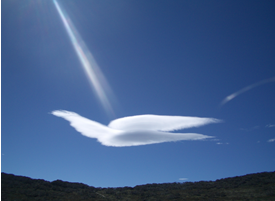Sometimes we can find ourselves caught up in unhealthy
relationships with others, leading to confusion, anxiety and even risk of
trauma. When I found myself in this situation I devised this exercise, based on
the metaphors of an ocean liner and a tugboat (suggested to me by a fellow
counsellor) to help to free myself up, and found that it was so useful that I
decided to share it.
Representing the other person
On the body of the ship, write down all the negative/
difficult/ problematic aspects of the person. As this is an exercise in freeing
ourselves up from the negative aspects of the person (rather than the whole
person) resist trying to balance this with positive aspects.
Representing ourselves
On the body of the tugboat, write down strengths and positive attributes that you have.
Representing the unhelpful relationship dynamics
Find two different coloured balls of wool (one for each
person), cut lengths of thread to fit between the two boats (about 10 of each
colour) and put them into a tangled pile (to represent confusion).
Then take one strand at a time and sticky tape them between
the tugboat and the liner, naming each dynamic as it is picked up. Write the
dynamic between the boats on the paper that each belongs to i.e. write dynamics
used by the other person on the red piece of paper and write the dynamics that
hold you to them (and used by you) on the green piece of paper.
Dynamics they may use could include manipulation, game
playing, guilt, “poor me”/ sick role, emotional blackmail etc. Whereas the
dynamics that are keeping us attached to the problematic side of the relationship
could include wanting support/ acceptance, putting their needs before our own, “shoulds”,
sense of obligation etc.
Separating ourselves from the problematic dynamics.
Take a pair of scissors and cut the threads of wool between the
two boats (you might like to have a witness to this act to make it more
powerful). Then tear up the ocean liner and throw the pieces in a garbage bin
(preferably an outside bin). After this you may find that you need to write a
letter (that you will never send), to the other person (and then destroy it)
and/ or express any emotions that come up.
Now come back to the tug boat page and pull out all the
threads that belong to the other person (and throw them away). Reflect on what
remains i.e. your ties, and remove any of the threads that are unhelpful. Then
cross these out and, if appropriate, write something that you will do about the
strategy e.g. “STOP” using it, or accept that it will never work.
For whatever dynamics/ strategies remain, reflect on whether they need to be replaced with something more helpful e.g. a “sense of obligation”
could be replaced with “compassion” and add any other that are needed e.g. “put
boundaries in place”.
Then, on the blank green area on the other side of the tugboat,
write a list of the strengths you have that can help to keep you out of the
dangerous dynamics.
The future
Use the image of the metaphor when in contact with the other
person to help avoid becoming caught up in the unhelpful dynamics again.










